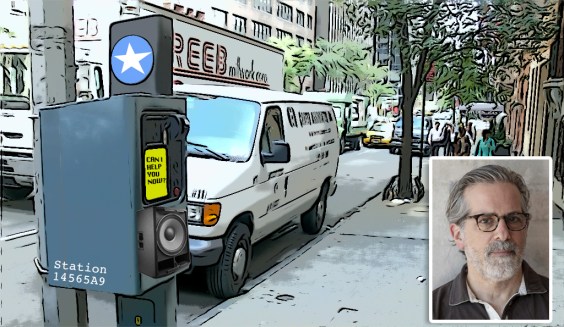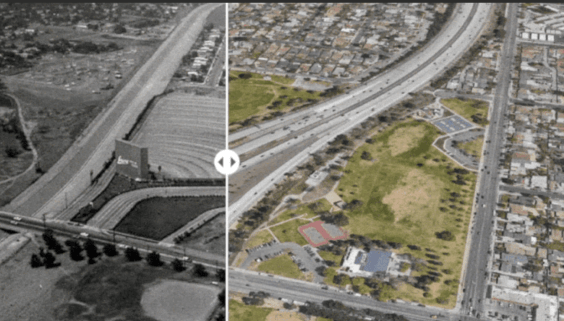We all have lots of well-meaning friends who swear they want to make the world a better place, and swear that the New York Times is playing a role in that process.
And that may be largely true of both your friends and their friend, the Gray Lady ... but it is not where cars are concerned.
This week's example comes in the form of Ginia Bellafante's piece about the supposed need for the city to create charging stations for electric cars. Like Bellafante, your well-meaning friends are rightly telling you that electric cars will be better than those powered by internal combustion engines (perhaps, like Bellafante, your friends opine about the "virtue" — virtue! — of driving an electric car). What's wrong with you, your friends ask. Electric cars will release less noxious fumes from their tailpipes! They're so much better! We've won climate change! Let's grab a beer.
Not so fast. It bears repeating, loudly over the irrational exuberance of the e-car acolytes, that electric cars simply solve one of the roughly 734 things that are ruinous about cars in general, and especially deleterious about cars in urban settings.
Whether electric or gas-powered:
- cars will still kill hundreds of people and injure tens of thousands of people every year in New York City, and kill tens of thousands and injure hundreds of thousands of people nationally. Cars will still be the leading cause of preventable death for kids.
- cars will still distort the public planning process, encouraging far-flung developments that need to be served by more driving, usually with highways shoved through disenfranchised communities, while also leading to loss of farmland and the further corporatization of agriculture (which has its own pollution problem).
- cars will still pretzelize public policy. We had our oil wars and petro alliances, and we've raped the land from Pennsylvania to the Philippines. But all of that was just a prelude to the coming Cobalt Wars — all the worse because those battles will be conducted in the name of "saving" the planet (i.e. the private car).
- cars will still create dead urban space that parents are afraid to send their kids into, depriving children of a vital part of their growth and development. Kids who live on the same block can't even play ... with kids on their same block — let alone be allowed to walk or ride a bike to school by themselves, or develop independence.
- cars will still block the way of surface transit, meaning the hundred or so people on a public bus will still be stuck behind cars carrying a single person. Ride the B61 late at night, when there are no cars on the roads — you can get from Red Hook to Windsor Terrace in 15 minutes. If it was like that during the day, car ownership would plummet (and the buses would get even better, further diminishing car ownership...).
- cars will still encourage a sedentary lifestyle that leads to higher public health costs.
- cars will still drain the Highway Trust Fund and require reallocation of money from other budget lines to make up the difference.
- cars will still make drivers crazy, rage-filled monsters.
- and last but not least, the drivers of cars will demand more and more public space for the storage of their private vehicles.
That's just a partial list, but that last one is crucial in any discussion of Bellafante's piece because the creation of "parking" space is the most ruinous of public policies in that it masquerades as nothing insidious or revanchist at all. Very few living New Yorkers remember that before the 1950s, it was illegal to leave your car overnight on the street. Public policy dictated that if you bought some private luxury, you needed to store it outside of the public realm. After that, le deluge: Street parking has been a part of life here for so long that most New Yorkers look at a car-choked city block and think, well, that's normal.
But it's not normal. Where there should be play streets for kids or car-free busways to speed the commutes of long-suffering transit users, all we have are cars in the way (car owners have even sued to get back what they consider to be "their" space if city officials think there might be a better use for it).
The 15+ year tradition of Streetsblog editors fruitlessly haranguing NYT Metro editors over their deeply ingrained and unacknowledged windshield perspective continues.
— Aaron Naparstek (@Naparstek) March 11, 2022
Bellafante's piece is a part of the windshield perspective that is so dominant in the Times. In this case, her premise is that the city should make electric cars "more attractive by making them easier to charge." But it's worth noting (not that Bellafante or her car-loving editors did) that placing charging stations along the curbside will permanently define that public space as parking space, meaning that we will never get that space back. Also, current fueling stations exist entirely on privately owned space; why shouldn't electric fueling stations?
Still, the Times is fighting hard to make sure our city's public space is reserved for cars for another 100 years, albeit electric cars this time. And the "war on cars" crowd are certainly going to lose again. One by one, electric cars are going to replace all of the fuel burners you see out your window and read in the crash reports every day.
This is not the world any of us should want. Even a Ford-funded study from the University of Michigan (also not mentioned by Bellafante) reveals that electrifying the entire fleet is not the panacea that Times readers believe it will be.
The key takeaway:
Electrification alone is insufficient to decarbonize the transportation sector. ... Even with electrification, rapid grid decarbonization, and optimized charging schemes, additional steps may be required to reduce transportation emissions and meet mitigation targets. This could include decreasing VMT (e.g. decreasing travel demand through teleworking, increasing vehicle occupancy), improving fuel economy (vehicle lightweighting, aerodynamic design, improving rolling coefficient), vehicle downsizing (within and between vehicle classes), optimal trip assignment (matching vehicle to trip needs), and shifting to alternative forms of transportation (walking, cycling, or public transportation).
So after the 30 years it will take to completely end the age of the internal combustion engine, we'll still have to do more to boost public transportation, to encourage less driving and to make better land-use decisions.
Why can't we start that now instead of electrifying the curb?






